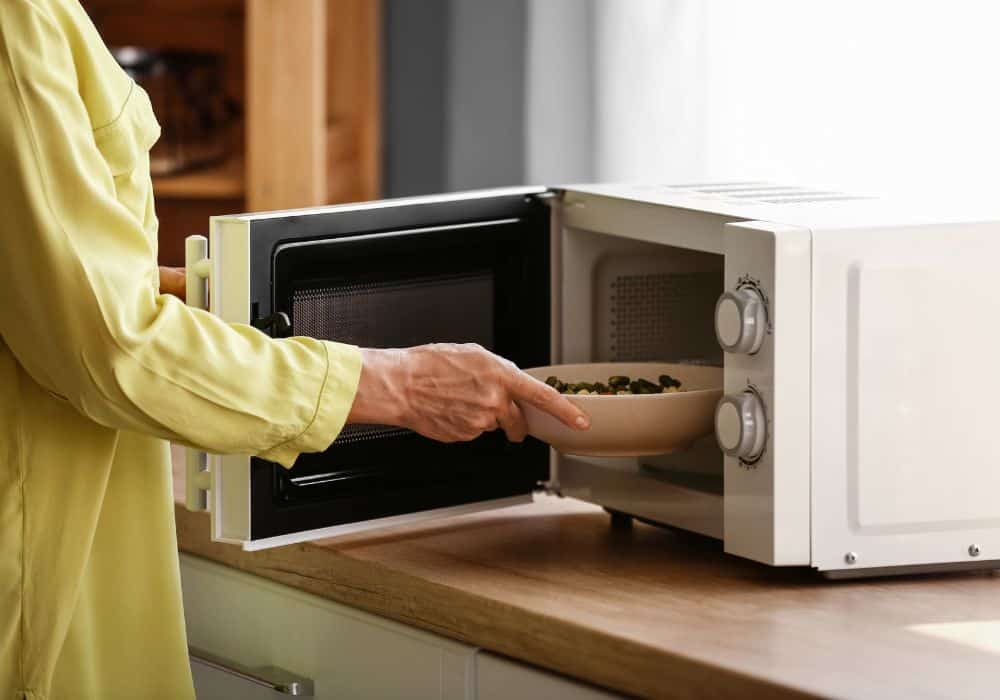
Imagine transforming your microwave oven from a basic reheating tool to a culinary marvel capable of producing delicious meals. With the proper knowledge and techniques, your microwave oven can become a vital part of your kitchen, offering time savings and delectable dishes.
Move beyond the old perspective of microwave oven cooking as just a shortcut or a compromise on quality. Whether you’re a busy professional seeking quick, nutritious meals or a culinary enthusiast eager to broaden your cooking skills, this article will supply the insights necessary to excel in microwave oven cooking, ensuring each dish you prepare is not only convenient but also satisfyingly tasty.
Table of Contents
Understanding Your Microwave Oven
Your microwave oven is a sophisticated piece of culinary technology designed to streamline your cooking. To fully leverage its capabilities, it’s essential to comprehend its operation and familiarize yourself with the power settings. Microwave oven heats food uniquely, from the inside out, by agitating water molecules with electromagnetic waves, thereby generating heat.
Various foods demand distinct power levels for optimal cooking without becoming overcooked or mushy. For example, delicate items like fish or vegetables might require a lower setting, whereas denser foods like frozen entrees may need a higher power level. Through experimentation, you can discover the settings that yield perfectly cooked meals with preserved flavor and texture.
The positioning of food in the microwave oven influences its cooking. The microwave oven’s center doesn’t always receive the most energy, so arranging food off-center can result in more uniform cooking. Rotating or stirring food midway through the cooking process also promotes even heat distribution, ensuring consistency in every bite.
Mastering Microwave Vegetables
Microwaving vegetables is a swift and simple method that retains more nutrients than boiling. Begin with uniform chopping to ensure consistent cooking, preventing some pieces from overcooking while others remain undercooked.
When microwaving vegetables, a minimal amount of water is needed. The inherent moisture in vegetables typically suffices for steaming them inside the microwave oven. If adding water is necessary, a tablespoon or two will do. Covering the vegetables with a microwave oven-safe lid or plastic wrap, punctured with a few holes for steam release, facilitates even steaming.
Enhance your microwaved vegetables with seasoning. A pinch of salt, pepper, or a splash of olive oil can transform bland vegetables into a vibrant dish. Explore various herbs and spices to find your preferred flavor combinations, making your quick and healthy vegetable dishes a culinary delight.
Reheating Like A Pro
Skillful reheating in the microwave oven can make leftovers taste freshly prepared. Even heat distribution is crucial to avoid unwanted cold spots. Arrange food in a circle on the plate, leaving the center empty, as it tends to heat more quickly.
Covering the dish when reheating is crucial. It retains steam, aiding in uniform heating and preventing the food from drying out. Ensure that you use a microwave oven-safe cover and avoid sealing it tightly, as steam must escape to keep the food from getting soggy.
Stirring or rotating the food midway through reheating can significantly enhance temperature consistency across the dish. By focusing on these details, you can ensure that your reheated meals are as enjoyable as when first cooked.
Defrosting Done Right
Defrosting in the microwave oven is a convenient technique that, when executed properly, maintains the quality and safety of your food. Utilize the defrost setting, which generally uses a lower power level, allowing even thawing without initiating the cooking process.
For effective defrosting, separate items when feasible, especially for things like chicken breasts or burger patties, to prevent the edges from cooking while the center remains frozen. If your microwave oven doesn’t rotate the food automatically, pause halfway through defrosting to flip or rearrange the items for uniform thawing.
Remember, food defrosted in the microwave oven can quickly reach temperatures where bacteria thrive. After defrosting, cook your food immediately to ensure safety. This approach not only saves time but also retains the texture and taste of your food, facilitating smoother and quicker meal preparation.
Snacks And Appetizers In Minutes
Your microwave oven excels not only in preparing main courses and side dishes but also in creating quick and delicious snacks and appetizers. From cheesy nachos to savory dips, your microwave oven can assist you in whipping up crowd-pleasers swiftly.
For nachos, layer your chosen chips with cheese and additional toppings, then microwave until the cheese melts perfectly. For dips, combine your ingredients in a microwave oven-safe bowl, heat, and stir until smooth and warm. These snacks are not only fast to prepare but also offer versatility to match your preferences.
Beyond nachos and dips, you can prepare popcorn, roasted nuts, or crispy potato chips in the microwave oven. By mastering these quick snacks, you’ll be equipped to satisfy your cravings or impress your guests with minimal effort and time.
Perfecting Fish In The Microwave Oven
Contrary to common belief, the microwave oven is excellent for preparing fish, delivering a consistently moist and tender result. Choose fish that are naturally soft and break apart easily, like salmon or tilapia, to get the best outcome in the microwave oven.
When you’re ready to cook, place the fish in a dish safe for microwave oven use and lightly cover it with a lid or microwave oven-appropriate plastic wrap, ensuring there’s a small gap for steam to release. Add your favorite seasonings to the fish, then microwave it at a medium power level, keeping an eye on it to prevent overcooking.
After microwaving, let the fish sit for a couple of minutes before serving. This downtime allows the cooking to finish due to the residual heat, ensuring your fish is perfectly done, staying juicy and tender. This technique offers a quick and splendid way to enjoy fish, faster than it would take your oven to warm up.
Baking In The Microwave Oven
While you can’t completely replicate traditional oven baking in the microwave oven, you can still prepare a variety of baked goods with the convenience and speed of microwave oven cooking. Mug cakes, cookies, and small brownie batches can be successful in the microwave oven.
Adjust your expectations and recipes for successful microwave oven baking. Because the microwave oven cooks food from the inside out, the texture may differ from oven-baked items. Nonetheless, with appropriate recipes, you can still enjoy tasty results.
When baking in the microwave oven, utilize microwave oven-safe bakeware and significantly shorten the cooking time compared to traditional baking. Monitor your baked goods closely, as they can transition from undercooked to overdone rapidly. With practice, you’ll master the ideal timing, enabling you to create delightful treats quickly.
In Conclusion
Mastering microwave oven cooking involves embracing innovation, grasping the subtleties of this versatile appliance, and infusing creativity into your culinary pursuits. By delving into these tips and tricks, you’ve entered a new domain of possibilities in your kitchen, where efficiency meets rich flavors.
View the microwave oven not just as a tool for convenience but as a portal to a world of quick, nutritious, and tasty meals. Embrace these insights, experiment with your dishes, and observe as your microwave oven cooking skills enhance your dining experiences to remarkable heights.

